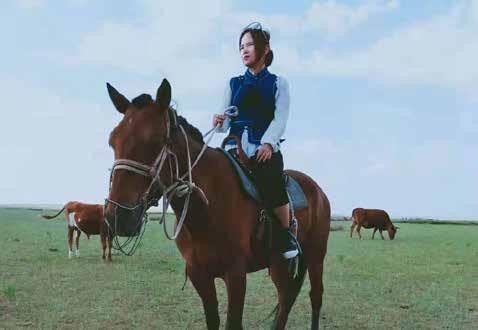
14 minute read
PANG XINHUA
Inner Mongolia-based Tour Guide
Interview by Ryan Gandolfo
Advertisement
My first impression of Pang Xinhua, who also goes by Mary, was in Hohhot back in 2018. With a contagious personality and passion for Inner Mongolia and its beautiful nature, she showed a group of us what the region was all about. From bonfires on the grasslands to drunken singing in Mongolian garbs, it was a hell of a time, and her role as a tour guide was paramount to the experience. Below, we catch up with Pang to learn what Inner Mongolia tourism has to offer and how she handles the difficult duty.
What made you want to be a tour guide? I studied tourism management when I was in university. I thought a tour guide would make for a very cool job – I can travel to many different places for free and meet various people. After I became a guide, I realized that this job is not easy by any means.
The bigger the group, the more exhausting it can be – and difficult to eat or sleep well. But I still love my job; I like working outdoors instead of an indoor office job. I can always enjoy nature, fresh air, sunshine and so on. Being an Englishspeaking guide makes me open-minded and understand the world better, so I feel grateful for this job.
From your perspective, what would the ultimate trip around Inner Mongolia entail?
If you ever come to Inner Mongolia, you have to ride a Mongolian horse. You can enjoy the gallop on the open wild grassland – it’s my favorite activity.
Here’s a breakdown of highlights and my personal must-do list of Inner Mongolia.
1. Landscape and tourism attractions
We have dense forest, big rivers and beautiful grassland in the east. Typical steppe, desert, old temples and the Genghis Khan mausoleum in central Inner Mongolia. In the west, there is
boundless desert as well as poplar forests.
2. Food
You have to try Mongolian cuisine to really appreciate the province. We would cater roast whole lamb for important people or during weddings in the old times. With crispy skin and tender meat, only one bite will make you love it. Beef jerky is another favorite, while milk tea, yogurt, horse milk wine, cheese and mutton hotpot are some other must-tries that come to mind.
3. Experience
Horseback riding, like I previously mentioned, is a classic activity here. Besides this, there are so many activities in the desert, like sand sliding, zip-lining and sand surfing off-road, which is positively exhilarating when going up and down on the dunes. If you want to take it slow, you can ride a camel under the sunset and enjoy the peacefulness. If you like hiking, go trekking through the grasslands, mountains, or desert.
4. Art
Mongolian people are well known for their singing and dancing. We especially like singing while drinking – we call it unceasing songs with unceasing wine. Long-tone folk songs and a horse-headed fiddle are essential aspects of Mongolian music. Wherever you hear it, it’ll remind you of the grasslands.
What kind of challenges have you faced when guiding tours in the region? The biggest challenge for me is that some tourists can’t understand that life is more modern now on the grassland. They have this impression that Mongolians should always stay in yurts and live a nomadic life.
Yes, we still raise sheep and cows, but we don’t have to move around anymore. Mongolian families have their own grassland, run their own businesses, move into houses and drive cars. Sometimes it’s just difficult to explain this to some stubborn people, and they think we didn’t take them to the real Mongolian grassland.
What do you hope tourists learn about the culture and scenery of Inner Mongolia when visiting? I hope tourists know that we have not only have the grassland but also the forests, mountains and desert – we even have stone forests. Once you come here, you can explore different places and enjoy the different natural scenery. Since Inner Mongolia is connected with Mongolia and Russia, we have border tourism as well.
I think you should learn the Mongolian history and culture – Genghis Khan’s great kingdom and Kublai Khan’s big empire, which was the largest territory created by humans. Second, Tibetan Buddhism is the main religion here. Hohhot is called ‘Temple City,’ as there are many old temples from over hundreds of years here. Buddhist activities and celebrations would be held during festivals, and people pray for a good life. Lastly, Mongolian people are very open and friendly – we welcome friends from all over the world.
> This interview has been edited for clarity. To learn more about tours in Inner Mongolia, add Pang’s WeChat by scanning the QR code :
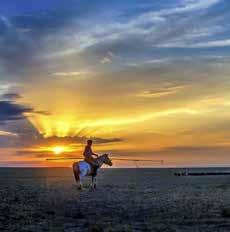
ITCHY FEET
ROLLER COASTER
Window Shopping
Heading to Sanya for a little vacay? If you’re looking for something to do – aside from lounging on the beach – you might be pointed to the Walking Street Night Market. This nightly event starts at 6pm and usually ends at 10pm unless business is booming during tourist seasons. Just down the road from Lover’s Bridge, this market is similar to many others found throughout China, but does have a few unique twists.
If you happen to be staying near to the Night Market either in Sanya Bay or Dadonghai, we would recommend it as a time filler, but we don’t feel this is a mustsee. The Night Market holds promise but needs development in character and attraction. If you can’t make it to this area during the night, do know that this same area has brick-and-mortar shops that sell inexpensive odds and ends throughout the day.
It’s best to avoid the very popular shop on the corner of Xinjian Jie and Hongqi Jie as the prices are outrageous and the attendants are trained to be firm.
MILE HIGH
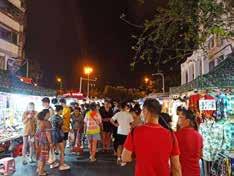
Greener Pastures
China could allow international travel with fewer restrictions by Spring 2022 if vaccination targets within the country are met.
Zhang Wenhong, head of Shanghai’s COVID-19 clinical team, told South China Morning Post that restrictions could be eased if the country vaccinates 70% of the population by spring next year. He said this would provide China with an “immune barrier” and that they would then have to communicate with other countries regarding travel arrangements.
However, Zhang also warned that China risked falling behind other countries when it comes to per capita vaccination rates and that this could delay the easing of restrictions. The country has previously said that it aims to vaccinate 80% of its population by mid-2022.

HOSPITALITY HIGHLIGHT
Alila Wuzhen
Located in the historic scenic town of Wuzhen in Zhejiang province, Alila Wuzhen is a pristine getaway. It is an ideal spot for couples and small families who are in search of quality time away from the daily grind. With 125 different modern art-style rooms, this accommodation offers garden suites, loft suites, garden villas and pool villas for a clientele expecting a perfect stay.
The luxury resort’s minimalist architecture blends elements of a classic Jiangnan village, with waterways prominently featured. Take advantage of Spa Alila, which integrates local chrysanthemum into a delightful spa treatment. Guests can enjoy the allday dining restaurant Shui Shi Kou – named after a floating market from ancient times – as well as local Chinese restaurant Si Shui. Alila Wuzhen also has two well-designed bars for those looking to unwind with a glass of vino or milk.
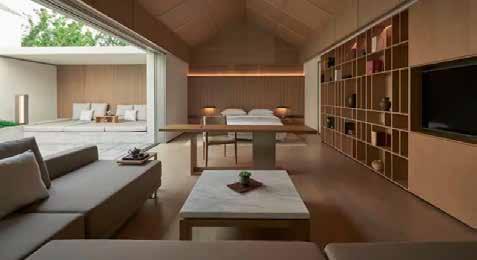
San Juan, Puerto Rico
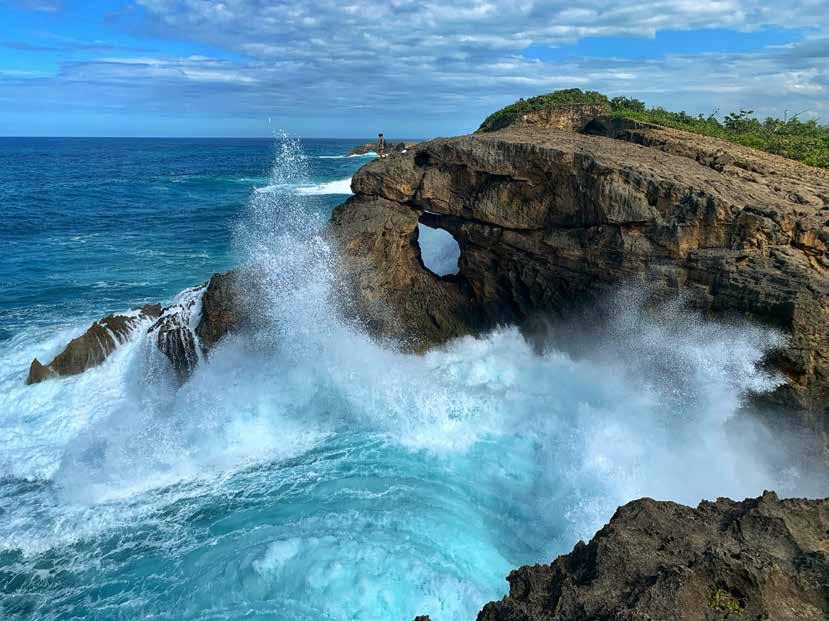

The captivating city of San Juan, Puerto Rico is more than just a Caribbean getaway; it’s an architect’s wonder, a history buff’s dream, a foodie’s paradise and a photographer’s inspiration.
The old town of San Juan is rustically charming and colorful yet decrepit in the most endearing of ways. Historical and modern function in the same shared space, appealing to varied travelers.
Wander the archways of Castillo San Cristobal, the largest and best-preserved Spanish military fort; stop by Castillo San Felipe del Morro, the gateway to the Spanish empire in the form of a 16th-century citadel; and finish the evening with a stroll along Calle Fortaleza, home to some of San Juan’s best restaurants, bars and boutiques.
On the weekends, a popup street fair takes place at Paseo la Princesa, a promenade filled with food vendors, live music and performance art.
Santurce is a hip neighborhood filled with street art, cafes and hangout spots, while Calle Loiza is a must-visit for the excellent nightlife and wide array of restaurants covering global cuisine options.
Coffee culture is strong throughout the city and when coupled with the up-and-coming craft beer scene, you can enjoy a good brew of any kind, regardless of the time.
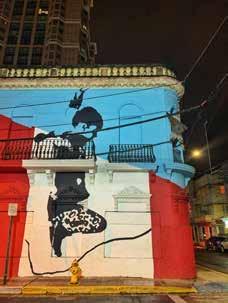
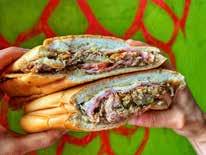
Our biggest piece of advice is to arrive hungry. You can devour Cubanos stuffed with three kinds of pork on shatteringly crisp pan de agua as well as springy mofongo – the unofficial king of Puerto Rican cuisine featuring mashed plantains, vegetables and various proteins of your choosing. You’ll need to sample fat-dripping whole roasted pig in the form of lechon and every kind of sweet pastry like quesitos, pastelilllos de guayaba, polvornes, tembleque and besitos de coco. The food is worth ignoring swimsuit season, despite the beautiful beaches that surround this epic city.

WILD SMILES


ByFab Photography on The Art of Capturing Human Emotion
Interview by Sophie Steiner

Fabiola Liacy De Felip, owner and founder of ByFab Photography, is a French-Italian photographer specializing in what she likes to call ‘humanist photography.’ She traverses the country, capturing everything from decrepit buildings on the outskirts of Shanghai to remote village tribes, not only connecting with those on the other side of the lens but also helping to support an NGO charity project. With a strong passion for capturing true human emotion, Liacy De Felip hopes to positively impact the world, raising more awareness for responsible travel.
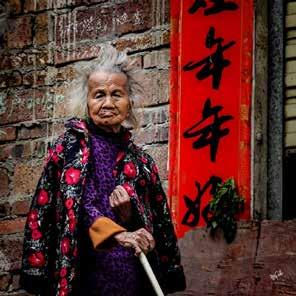
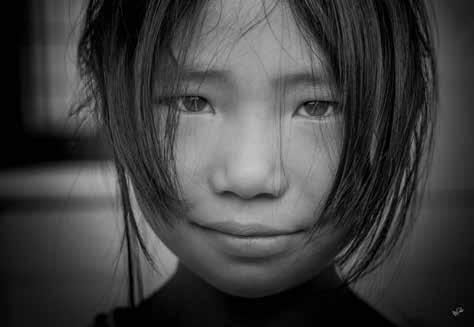
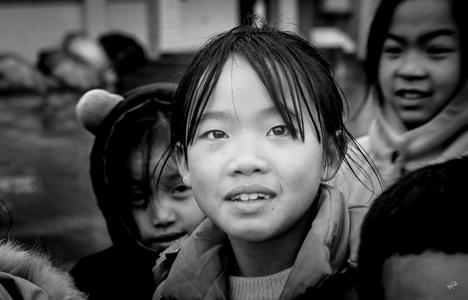
How did you get into photography? Since I was young, I always loved capturing candid moments. My dad owned a Canon camera, and I would borrow it and play around. Years later, I was always known by my friends as that annoying one who would take pictures everywhere, but in the end, everyone was excited to see what my eyes had captured.
I regularly perused travel magazines and photo books for inspiration (and as a form of escape), but I never knew then that I would become a photographer.
Then, 10 years ago, I took a huge leap of faith. After working for the same multinational corporation in Italy for over 13 years, I quit my job and moved to London. The real shift happened when I later moved to Hong Kong after studying Chinese for two years; my eyes and mind became more sensitive to my surroundings as I photographed the world around me, and the steps I needed to take to start my new career path became clearer. I felt I had things I needed to share through the way that I see them.

When did you move to the Chinese mainland, and why? I moved with my husband – who was relocated for a work assignment – in 2017 after living in Hong Kong for four years.
Why are you most specifically interested in portraits? Are people your favorite subject to photograph? People are my favorite subject. I prefer the connection with a subject that comes before a photo is taken rather than one that comes after a ‘stolen’ street scene snapshot. Of course, I still enjoy capturing a timeless expression, but understanding the emotion behind it that results from personal connection means even more to me. How has COVID-19 impacted your photography-related travel?
A lot, in both a positive and negative way. COVID-19 allowed me to focus my efforts domestically and finally open my own photography company, ByFab Photography. While I had to postpone several projects, this also freed up time to work on others. For example, I was able to help Couleurs de Chine, a charity organization, focus on children’s education in Guangxi through a photography exhibition that we put together.
How would you describe your photography style? I don’t really like putting an exact title to it because, as is the case with life, style can always evolve and change. Yet, I would consider myself a ‘humanist photographer,’ capturing the soul of a place or person.

Whose work has influenced you most? I have always admired Annie Leibovitz’s work, along with Henry Cartier-Bresson and some Magnum street photographers, as well as Steve McCurry. More recently, I came across Rehahn’s Instagram account and felt like we have a similar way of seeing and interacting with people; I was so happy to finally meet him last year in Vietnam after falling in love with his work. Lee Jeffries and his stunning and powerful portraits have also heavily impacted me.
Nikos Aliagas, a French journalist and TV host passion-
ate about photography, captures incredible work by telling stories of his Greek ancestors by balancing light and shadows through black and white photography; this truly speaks to me.
I’ve also met numerous people in the last decade across the UK, the US, France, Asia and, of course, Shanghai that have inspired me to continue developing my work, helping to shape me into the photographer I am now. graph, which is still true. But, now I can also say that I live for the moments, a few weeks after taking photos of a particular subject, when I’m editing a photo I haven’t seen since the day I shot it, and I get to rediscover these faces on my computer screen. I crop them and adjust the lighting to make it just right so t evokes that same feeling I got while pressing the button. There are times when I look at a portrait again and get quite emotional as I am brought back to that moment in time when the photo was captured.
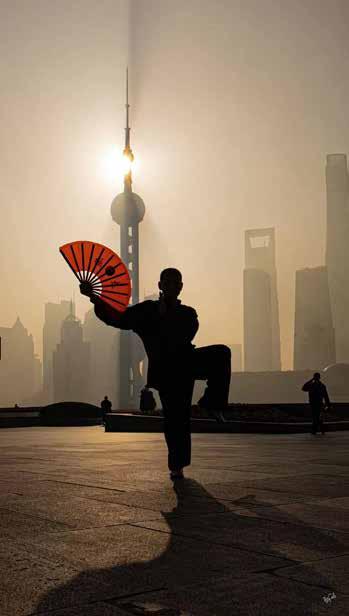
What is your favorite aspect of photography? Previously, I would have said the connection with people I impromptu meet and photo-

Do you have any particular photography equipment you can’t live without?
My two favorite lenses I shoot with are a 50mm prime lens and a 24-105 millimeter on a Canon RP camera.
What is the most rewarding part of being a photographer for you? And what do you like least about it?
What I like least is the editing. Of course, I enjoy realizing a finished product, but when I edit, I choose not to follow the technical dos and don’ts. There will always be someone to tell you that this is not like it should be, but I choose to represent only what my eyes see. I follow my vision, my eyes and my heart rather than follow the technical rules.
What I love most is interacting with people; I love when I can share connecting moments with them, whether it’s the time spent photographing them or, afterward, sharing the photos with them, when possible.
Where do you hope your photography will take you in the next 5-10 years? Even though I’ve been doing photography for years already, I know this is only the beginning of a beautiful journey for me.
I hope I will never lose my passion, and I hope I can continue to give love and convey emotion through my pictures. I hope I can share more through being published to a wider audience, and I hope to continue to capture the essence and soul (and not only the appearance) of people, places and objects, to tell stories from behind my lens.
Finally, I hope my photography and travels will help others understand that everything in this world is connected; we are the same, despite cultural differences – we are all humans.
BUSINESS TECH &
Crowded
The Top 10 Most Populated Cities in China p34




